The Brief
Our team was tasked to create a leaflet to promote the client’s company and the services they offered. The client also stated in the brief that she would like ‘other deliverables’. She was initially unsure of what these deliverables would be, but that would be discussed at a later date. The company, called ‘Optimum’, is devoted to helping young people within education to reach their full potential and help students with their self-growth. This was a moderately open brief which allowed us to have considerable freedom when designing the deliverables against a brand and choosing which ones to present to the client.
Research
Initially, we researched the client to understand the company’s ethos and their audience. This was the most valuable stage of the real jobs process as we learned what information we needed to prioritise. We created user personas to understand the audience that we would be designing for; this allowed us to acknowledge which formats, layouts and deliverables would best suit the needs of the audience and maximise user satisfaction. We created three user personas, as this allowed us to consider a range of users and to ensure that we made the designs as successful as possible. A moodboard was created which collated various existing leaflets into one space, allowing us to compare which colours, types and layouts would be most appropriate for our client.
The next stage of the research section was to consider the content structure. To get underway with this, we emailed the client to check if she had any specific requirements concerning content that should be included, or any initial ideas on the layout of the leaflet. She gave us a clear layout for the leaflet, but as a group we believed this would not be effective for the users, as we felt we needed more space for the information she specified we include, so we created other layouts to show the client (these are shown in the designing section). As a group, we had considered how to convince the client to understand the new layout proposals effectiveness, whilst still ensuring that we considered her ideas.
As a team, we worked together to decide which deliverables to propose to the client; we decided on a notepad for staff to use for taking notes when in meetings or on the phone, along with a poster to promote the Walking in Reading Events. The client decided to take on both of these deliverables. After discussing the format and materials with the client we created estimates to send to the client. However, the client decided to get the deliverables produced elsewhere. Regardless of this, creating a production specification and estimate was very helpful, as this taught us about the level of detail required when understanding the format and materials of your deliverables and understanding what materials would best suit the deliverables you are creating.
Restated Brief
The restated brief helped us to consider all aspects of the project and keep us organised. We aimed to create a clear brand identity throughout the deliverables that we produced, which was made easier by the brand guidelines given to us by the client. We found creating a restated brief extremely helpful, as it allowed us to look at the project as an overview and then again in detail, which eliminated any issues or queries before starting the project. One aspect of the real job we could have improved was considering how long each part of the process would take, because initially we had not considered how the planning section had to be changed and updated regularly.
Designing
As mentioned in the research section, we created a range of leaflet designs to give the client a choice concerning the layout. We had to comply with the brand guidelines given to us, while still creating a variety of options, which are presented below. We believe that creating these iterations to present to the client was helpful, as it allowed the client to pick the elements from each design that she felt were effective. This gave us a clear idea about which elements the client felt were effective for the leaflets and made the process of designing the other deliverables less complex for us as a team.
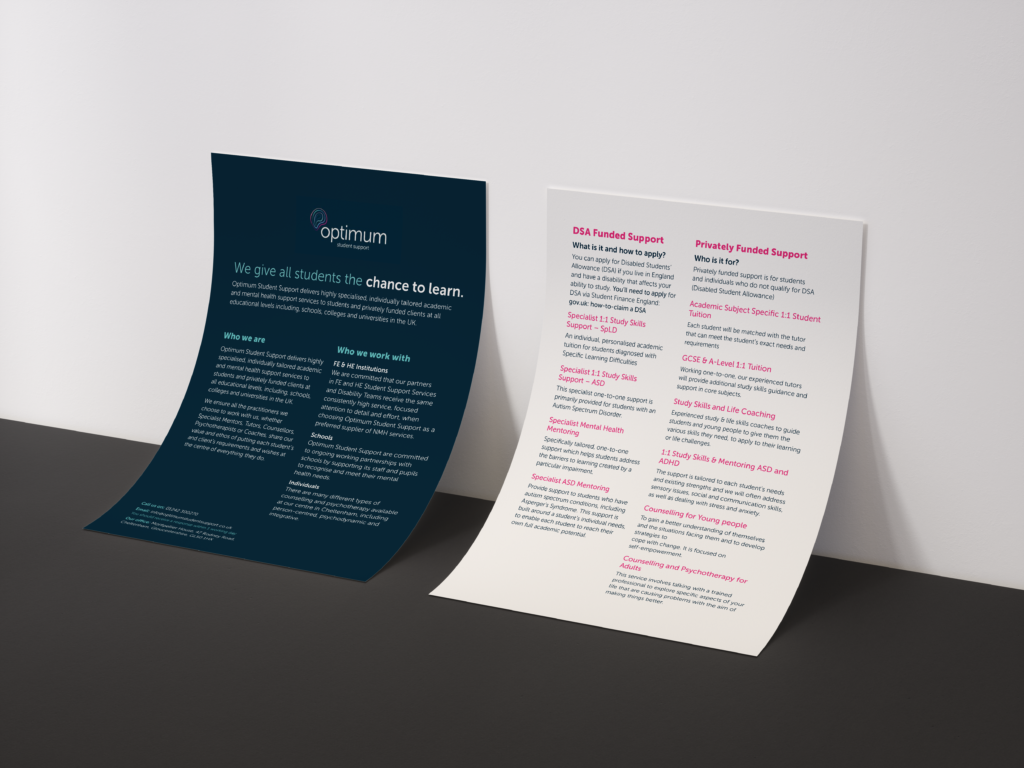
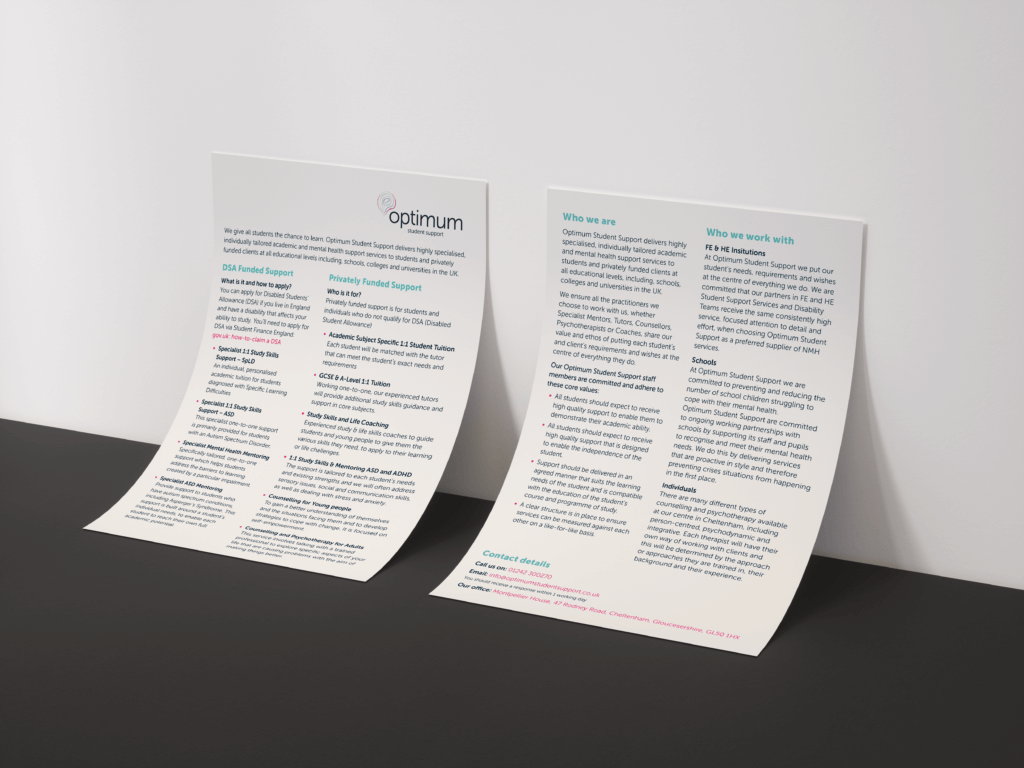
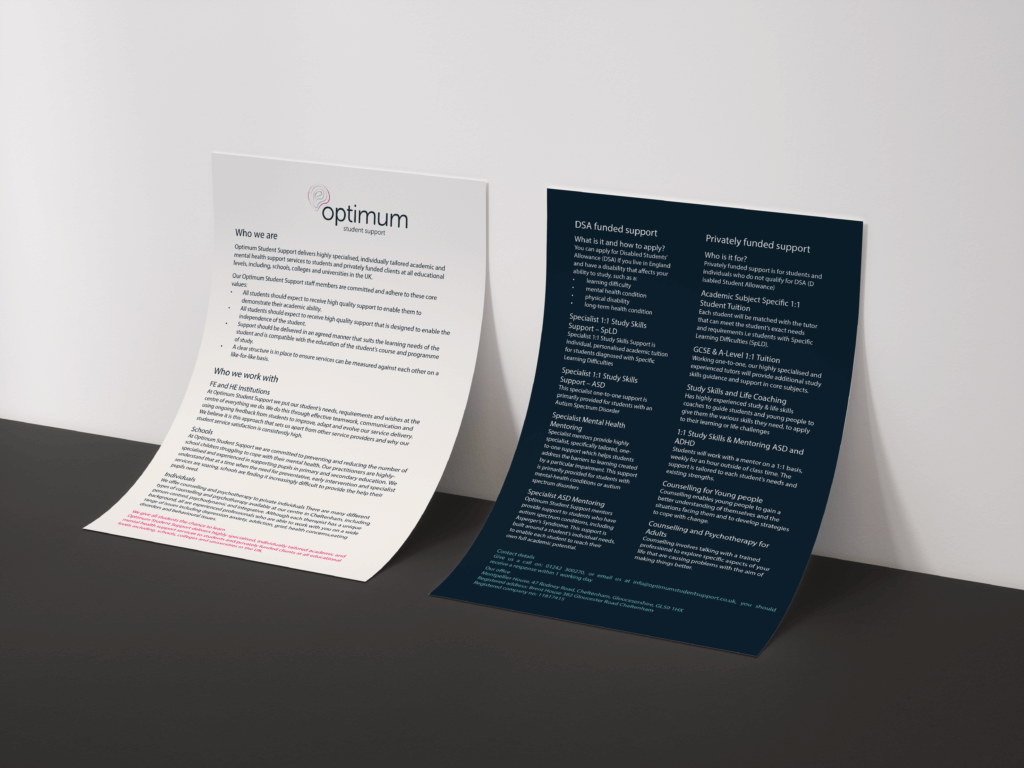
Once the leaflet design was finalised it was easier to design the notepad, as we had created a clear style that the client liked and we believed the users would like too. The client decided to get the poster designed elsewhere, but as a team we still wanted to work with these brand guidelines on a larger scale to test our abilities to adapt designs. This task encouraged us to work with the brand guidelines on a small scale like business cards. Taking the initiative to produce our own deliverables was very rewarding, as we were able to work on creating a brand on a range of scales and ensuring our design style was suited to both an A3 poster and business cards. This skill is very transferable to other projects that we will undertake in our design career. When creating the other deliverables, we felt that our team came together to help each other overcome these challenges, especially when making sure that the deliverables all were uniform and looked like a set; rather than it being obvious they were designed by individual people.
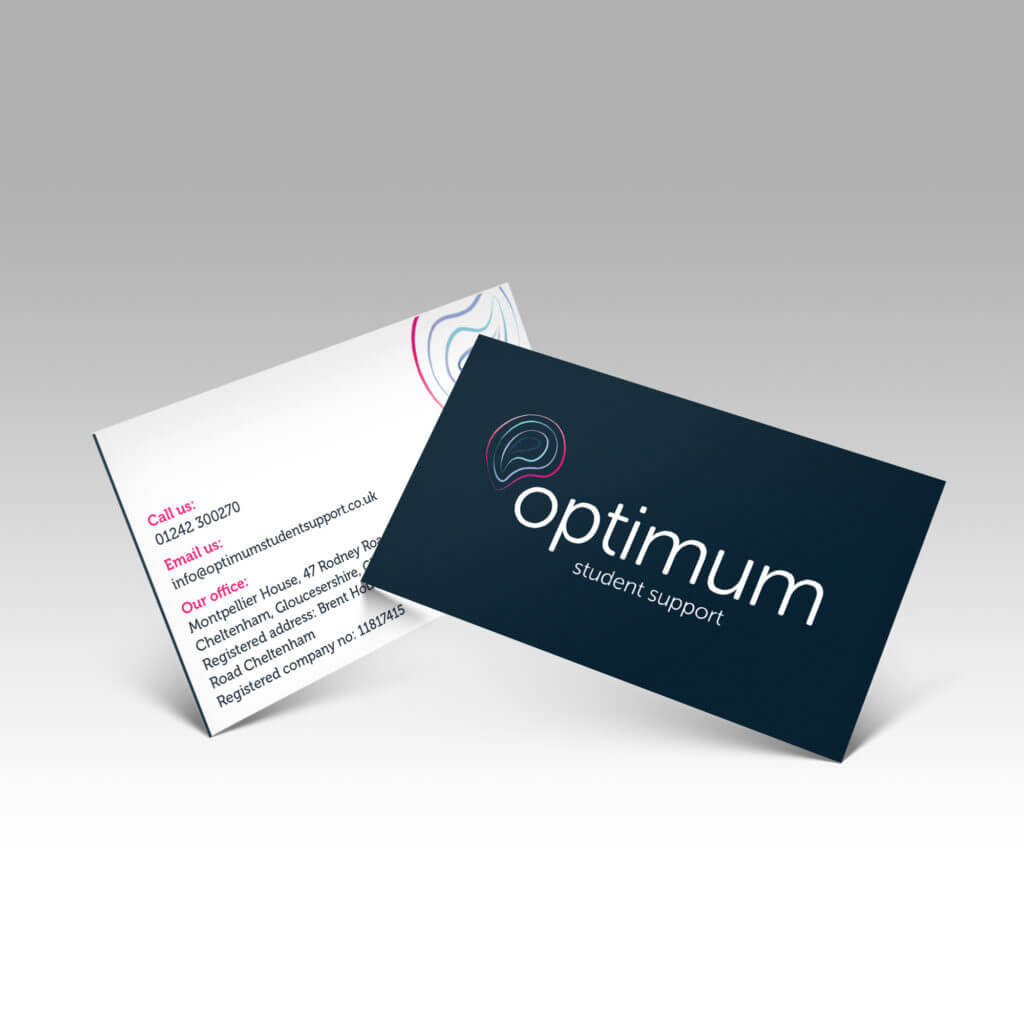
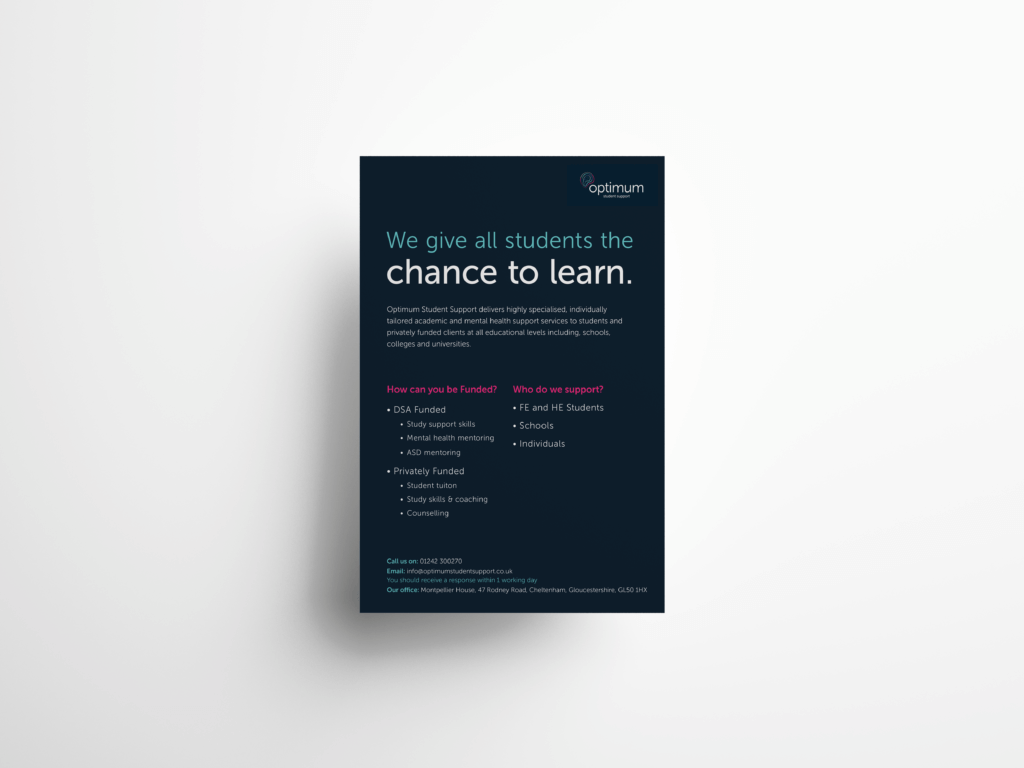
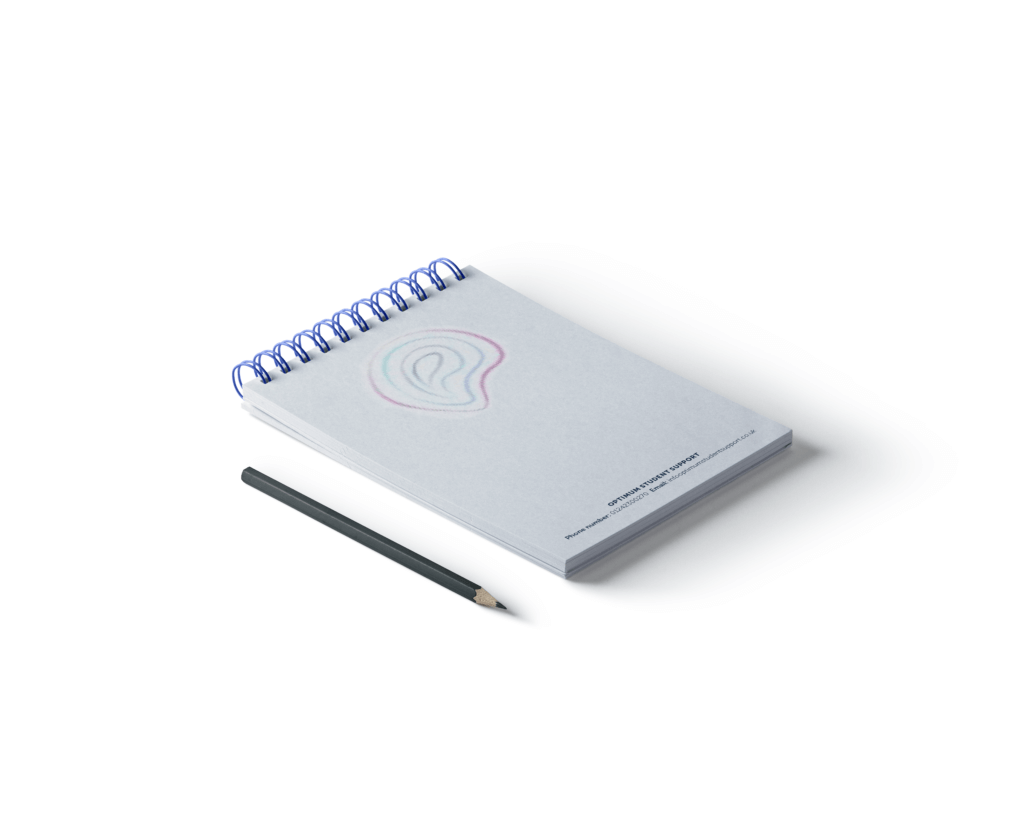
As a team we ensured we organised files clearly, so that when accessed by others there was no confusion when working on the designs. We worked collaboratively on each of the deliverables and gave feedback on each other’s work throughout. We felt that the collaborations between the team when creating all the deliverables made our designs more successful as we had multiple opinions on the designs before presenting it to the client. This helped us to remove any mistakes and push our designs to its limits within the brand guidelines given to us.
Real Job Meetings, Client and Supervisor Feedback
The real job meetings were attended by at least one of our team members each week. We gained feedback on the designs that we had been creating from the target audience which was University students. We also gained feedback on how to communicate with the client and the real jobs process itself; this was extremely helpful for our group as seeing everyone else’s progress each week pushed our group to continue to do our best. We had regular meetings with our supervisor who was happy with our progress and gave us feedback throughout, especially on the smaller details that you may miss out when looking at a design for a long period of time. Our client was very helpful with feedback and had a clear vision of what she wanted. She stated we were very professional when communicating with her and that we presented a good range of ideas. Our client left her job at the university mid-way through our design process, which we discovered as she wasn’t very responsive with her university email, this meant our communication method had to change to telephone calls; it was important for us to remember all of our questions and queries when speaking. The contact with both our supervisors and the client gave us good experience of communicating with others.
Reflection
We found this real job extremely rewarding because of the help that the deliverables gave to those who use the client’s services. It taught us both technical and soft skills that we can transfer into future projects and my career. Communicating with a client both in person and over email was very challenging at times; Lauren was the main contact for the client and learnt quickly how to cover many aspects of our project without overwhelming the client. We are pleased with how our team worked, due to our collaborative approach and helping each other when someone was struggling. We divided responsibilities effectively and this helped us to be as effective as possible and deliver our best work to suit our client’s needs. We feel we created a clean and coherent set of deliverables, which communicated the relevant information effectively.

